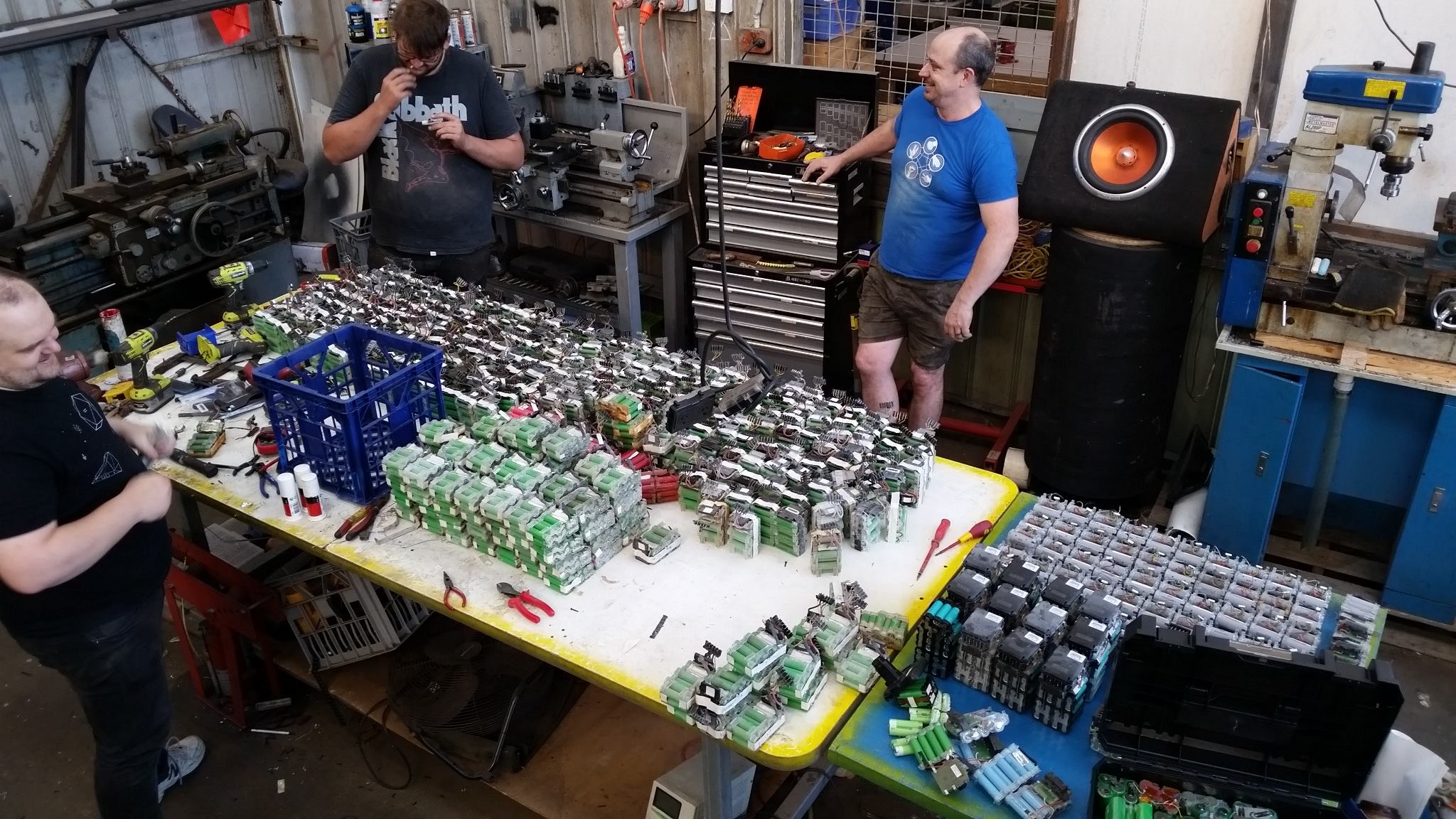This blog was originally written for hsbne.org
At HSBNE, projects tend to go a bit overboard. Our current interest in recycled batteries is no different. Over the past few weeks, we’ve collected over 5000 individual cells for recycled battery projects. Fitting out electric projects with these has a number of benefits:
– Extending the useable life of batteries. The recycling process itself requires a lot of energy, and the longer we can put it off, the better for the environment.
– Recycled batteries offer significant cost savings for DIY projects. Buying fresh batteries for an electric skateboard, for example, can cost anywhere between $500-800. This means cutting down your project cost by one to two-thirds!
The following steps are needed to get these batteries to a project-ready state. Take the existing battery housing case off and separate the connected cells. Measure the voltage of each cell with a multimeter and write voltage on the batteries for future reference. If the cell is below 2.5 volts it’s probably damaged and past it’s use-by date. If it’s above, it’s ready for further testing. Charge the batteries under close observation, check for and discard batteries that heat up. Then, discharge the batteries to count the milliamp hours drawn from the cell. Write this info on the cell for future reference.
Now it’s time for sorting. Different batteries are more specialised to different projects. It’s helpful to look up the data sheets of the cells for reference. Cells tend to either have a larger capacity and lower discharge rate or a lower capacity and higher discharge rate. With the measurements taken, you can sort the batteries into packs ready for your next project. Projects can include phone/laptop recharging bricks, electric bikes, scooters, skateboards, RC cars, go karts, powerwalls and much more.

